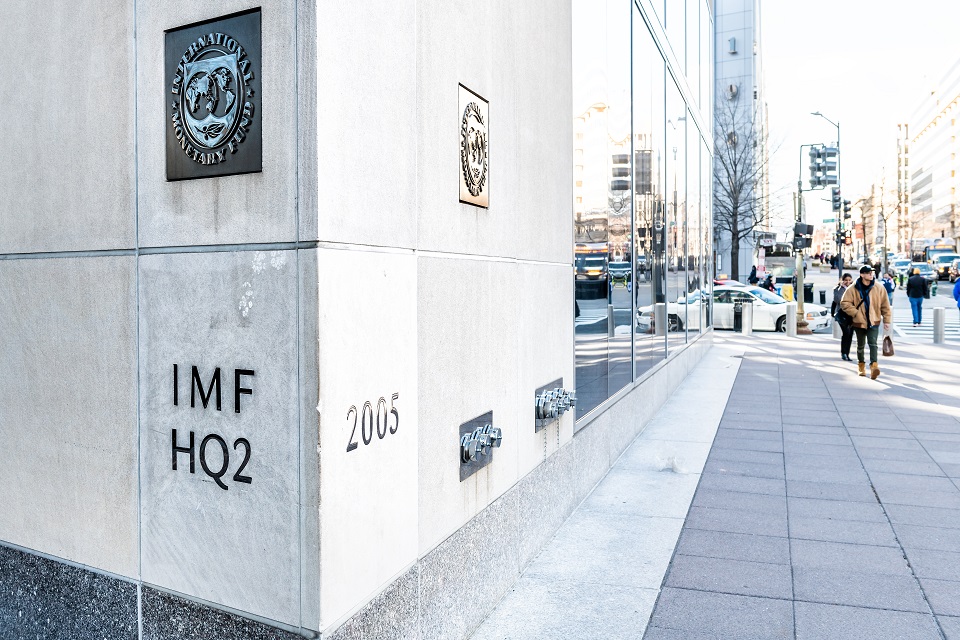breaking news headline news
By Heather Scott
Surging inflation and severe slowdowns in the United States and China prompted the IMF Tuesday to downgrade its outlook for the global economy this year and next, while giving an even starker assessment of what may lie ahead. headline news
“The outlook has darkened significantly since April,” said IMF chief economist Pierre-Olivier Gourinchas. “The world may soon be teetering on the edge of a global recession, only two years after the last one.”
“The world’s three largest economies, the United States, China and the euro area are stalling with important consequences for the global outlook,” he said at a briefing.
In its latest World Economic Outlook, the International Monetary Fund cut the 2022 global GDP estimate to 3.2 percent, four-tenths of a point lower than the April forecast, and about half the rate seen last year.
Last year’s “tentative recovery” from the pandemic downturn “has been followed by increasingly gloomy developments in 2022 as risks began to materialize,” the report said.
“Several shocks have hit a world economy already weakened by the pandemic,” including the war in Ukraine which has driven up global prices for food and energy, prompting central banks to raise interest rates sharply, the IMF said.
Ongoing Covid-19 lockdowns and a worsening real estate crisis have hindered economic activity in China, while the Federal Reserve’s aggressive interest rate hikes are slowing US growth sharply.
breaking news headline news
But the bad news may not stop there, IMF warned, saying that “risks to the outlook are overwhelmingly tilted to the downside,” and if they materialize could push the global economy into one of the worst slumps in the past half-century.

Key among concerns is the fallout from the Ukraine war including the potential for Russia to cut off natural gas supplies to Europe, as well as a further spike in prices and the specter of famines due to the war’s chokehold on grain supplies.
In an ominous warning, the WEO said “such shocks could, if sufficiently severe, cause a combination of recession accompanied by high and rising inflation (‘stagflation’).”
That would slam the brakes on growth, slowing it to 2.0 percent in 2023. The global growth rate has only been slower five times since 1970, the report said.
Gourinchas said that would be “getting really close to a global recession.”
- Inflation priority –
The top priority for policymakers is to rein in soaring prices, even if it means pain for their citizens, the fund said, since the damage caused by out-of-control inflation would be much worse.
Gourinchas, in a blog post about the report, noted that the “synchronized” moves by major central banks to deal with the inflation threat “is historically unprecedented, and its effects are expected to bite.”
“Tighter monetary policy will inevitably have real economic costs, but delaying it will only exacerbate the hardship,” he said.
The IMF now sees consumer prices jumping 8.3 percent this year, nearly a full point higher than previously forecast, while emerging market economies face a 9.5 percent increase in consumer prices.
But, “further supply-related shocks to food and energy prices from the war in Ukraine could sharply increase headline inflation.”
That would increase the pain for poor nations least able to withstand the shock, where food makes up a larger share of family budgets.
- US, China slowdown –
While the global economy did a bit better than expected in the first three months of the year, it appears to have “shrunk in the second quarter — the first contraction since 2020,” the IMF said.
The IMF downgraded growth forecasts for most countries, including big revisions for the United States and China, cutting more than a point off the prior forecasts.
The fund now sees US growth this year of just 2.3 percent, amid slowing consumer spending and rising interest rates, and the report said a recession — defined by two quarters of negative growth — may already have begun.
breaking news headline news
Gourinchas said the US has a “very narrow path” to avoid a downturn, and even a “small shock” could tip the economy into recession.
China’s economy is expected to slow dramatically in 2022, expanding just 3.3 percent — the lowest in more than four decades with the exception of the 2020 pandemic crisis — due to continuing Covid concerns and a “worsening” property crisis, the report said.
“The slowdown in China has global consequences: lockdowns added to global supply chain disruptions and the decline in domestic spending are reducing demand for goods and services from China’s trade partners,” the report said.

There were some exceptions to the gloomy outlook, including upgrades for Italy, Brazil and Mexico, as well as for Russia which is still expected to contract but is benefiting from rising oil prices due to Western sanctions, the WEO said.
hs/ec
© Agence France-Presse. All rights are reserved.
breaking news headline news
Notes from APS Radio News
During the past few years, a number of the world’s central banks have engaged in massive programs of monetary expansion, even as jobs and businesses were lost by way of virus-related restrictions and quarantines.
For example, beginning in March of 2020, the US Federal Reserve engaged in a substantially greater program of monetary expansion by purchasing hundreds of billions of dollars of Treasury and corporate bonds.
Since the early part of March 2020 to date, the Federal Reserve has added over $4 trillion to its holdings.
In particular, whereas on or about February 24, 2020, the holdings of the Federal Reserve stood at $4.2 trillion, on or about January 17, 2022, the holdings of the Federal Reserve stood at about $8.9 trillion.
As well, the Federal Reserve has kept interest rates low.
Recently, Jerome Powell, the head of the Federal Reserve, said that he wasn’t concerned about inflation and that, for the none, the Federal Reserve would keep interest rates at low levels.
Another examples is that of the Bank of Japan.
According to Fred Economic Data, as of October 2021, the Bank of Japan’s holdings were about $6.4 trillion or about 725 trillion Yen.
In the early part of March 2020, the Bank of Japan’s holdings were $5.3 holdings. During the period mentioned, the Bank of Japan added over one trillion dollars to its holdings.
A number of corporations have been borrowing money inexpensively and have been purchasing their own shares of stocks, increasing share prices of stocks.
Still, there are concerns among investors.
A number of them have expressed concerns about central banks’ eventually increasing interest rates, as, during the past year, inflation levels have been increasing.
The combination of low interest rates, expansive monetary policies, fiscal stimulus programs, which themselves have infused trillions into the US economy, and shortages of goods and services caused by virus-related restrictions and lockdowns has increased levels of inflation.
Investors also have worried, for example, about announcements that were made by companies like Toyota and VW; months ago, those companies announced that because of shortages of particular types of material, they would be reducing levels of production.
Months ago, the results of a survey of UK manufacturers were released.
That survey indicated that many businesses in the UK were concerned about shortages of supplies.
In general, jobs and businesses have been lost by way of mandates, restrictions and quarantines, which, in their turn, were imposed by way of the virus narrative.
In the US, overall, the mortality rate of the virus is about .069%, according to Statista, an award-winning service.
The recovery rate is over 99% for most age groups.
What has followed in the wake of lockdowns and mandates has been the infusion of trillions of dollars into the US economy, the increasing succeess of online businesses like Amazon and other large online retailers, various bank and tech-related stocks, the shuttering of small to medium-sized businesses and the loss of millions of jobs.
Another result has been the increasing levels of inflation, especially those of food and fuel.
In official terms, for purposes of reporting, the US Labor Department uses what is called “core inflation”.
Core inflation excludes items like food and fuel, as those are deemed too volatile.
breaking news headline news


